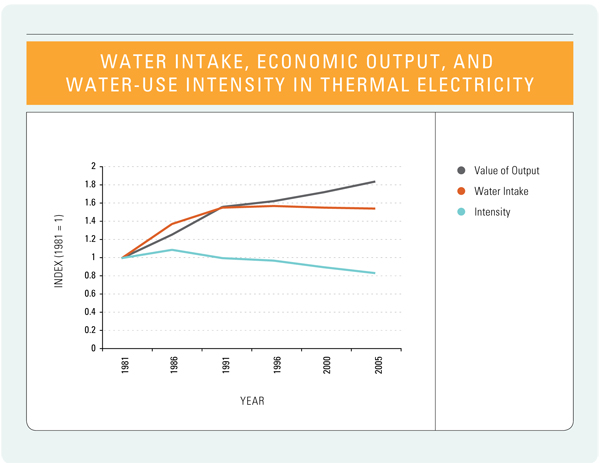Charting a Course – Thermal Electric Power Generation
Thermal electric power generation in Canada takes in more water than any other use, primarily from water bodies in Ontario, Alberta, and Saskatchewan. This sector accounted for 66% of the total national intake in 2005; its water use increased by about 53% from 1981 to 2005. Thermal electric power generation includes conventional fossil fuel and nuclear power generation, which use approximately 140 litres and 205 litres, respectively, to produce one kilowatt-hour of electricity. While a small portion of the water is converted to steam and used to spin an electric generator, most of the water is used for cooling. This water is then either recirculated or discharged. In 2005, approximately 2.5% of this sector’s water intake was consumed primarily from the loss of steam in the cooling process.
The economic value of this sector’s output in 2005 was $15.6 billion, or about 80% greater than 1981. This increase in value, coupled with rising water intake (53%), results in thermal having the highest water-use intensity of any sector. In 2005 this sector had the greatest water intake in Canada but produced only 3.1% of total national economic output. As a result, water-use intensity fell by 16% from 1981 to 2005.

view high-resolution version of above figure
Select a natural resource sector below to see its water use, including water intensity, water intake, and economic output.
Pulp and Paper |
Agriculture |
Manufacturing |
Oil and Gas |
Mining |
Thermal Electricity |
























